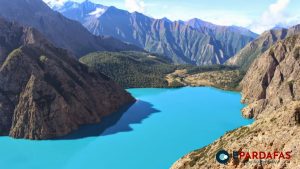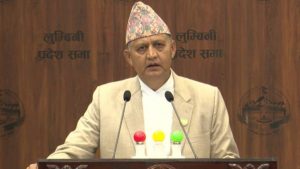
Pokhara 2024/25: Tourism, Tech, and Green Goals

Pokhara Metropolitan City, recently designated as Nepal’s tourism capital, has unveiled an ambitious and comprehensive set of policies and programs for the fiscal year 2024/25, which begins in mid-July. This strategic blueprint positions Pokhara as a leading tourism destination while emphasizing sustainable development, environmental preservation, and social welfare.
Central to this vision is the declaration of 2025 as ‘Visit Pokhara Year’, with the metropolis targeting 1.5 million visitors and aiming to attract 60% of the country’s foreign tourist arrivals. This is a bold and commendable goal that could significantly boost the local economy and establish Pokhara as a premier international travel destination.
Mayor Dhanraj Acharya has outlined several key infrastructure projects to realize these targets. These include constructing an entrance gateway at Simpani, building a dam on Fewa Lake, and developing a multi-facility entrance park at Kotre Majuwa. The creation of Fewa Beach on the upstream of Fewa Lake promises to enhance the city’s appeal further. Urban development initiatives such as building walking trails to heritage areas, transforming Ratna Mandir into a Palace Museum, and introducing satellite bus parks, multi-story parking facilities, and a metro taxi service are set to revolutionize the city’s infrastructure and accessibility.
Environmental sustainability is another cornerstone of Pokhara’s policies. The metropolis has set an ambitious goal of achieving carbon neutrality by 2043. Initiatives to support this include the implementation of a smart transportation system with an increased emphasis on electric vehicles. The development of lake-to-lake, cave-to-cave, and fort-to-fort hiking routes, along with the establishment of tourist destinations in each of the city’s 33 wards, reflects a commitment to diversifying and enriching the tourism experience while preserving the natural environment.
Major projects such as the International Convention Center, a glass bridge at David’s Fall, and tourism infrastructure development in the Seti River Gorge promise to create iconic landmarks that will draw global attention. The proposed waste processing center is a forward-thinking initiative that addresses the critical need for sustainable waste management in a growing city.
Pokhara’s commitment to social welfare is evident in its proposal for free public transport for senior citizens, health insurance for low-income residents, and free basic services for vulnerable groups. These measures are vital for fostering an inclusive community where all residents can thrive.
Economically, the modernization of revenue collection systems and the implementation of GIS tracking for property taxes are essential steps towards improving efficiency and transparency. The establishment of a business incubation center for startups indicates a strong focus on fostering innovation and entrepreneurship, crucial for long-term economic growth.
The city’s proactive stance on disaster management, including setting up a local emergency operation center and an early warning system, along with forming a rapid response team, demonstrates a commitment to ensuring the safety and resilience of its residents.
In alignment with the ‘Digital Pokhara’ concept, the development of an integrated information and service delivery system is a significant move towards creating a smart city. This digital transformation will streamline services and improve the quality of life for residents.
Lastly, promoting sustainable agriculture by designating organic farming pockets and encouraging alternative crops to mitigate wildlife damage reflects a holistic approach to environmental and economic sustainability.
Pokhara’s comprehensive policies and programs for 2024/25 reflect a visionary and balanced approach to urban development. By integrating ambitious tourism targets with sustainable practices, social welfare initiatives, and economic modernization, Pokhara is poised to transform into a model city that harmonizes growth with environmental and social stewardship.












Comments